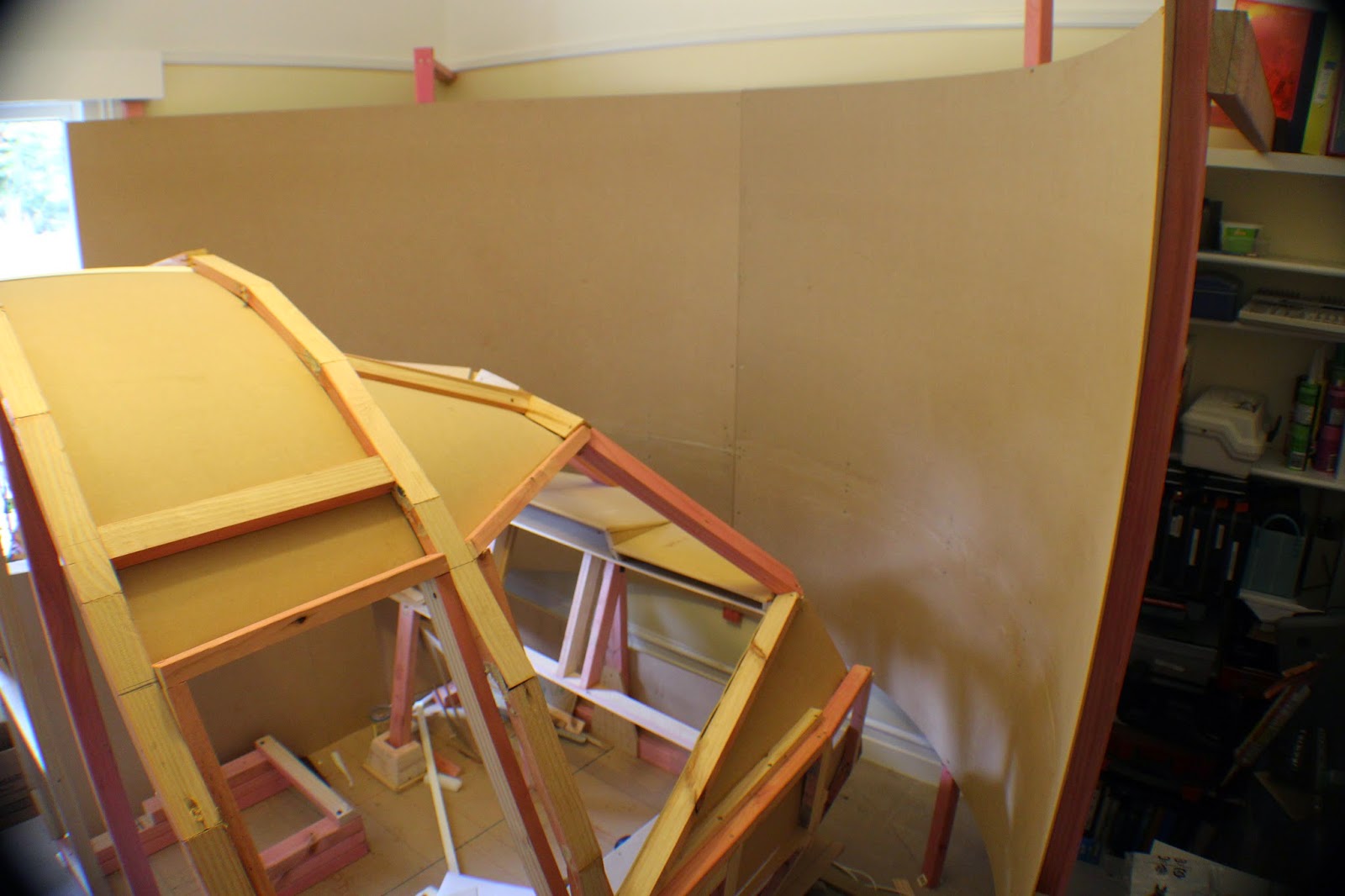Using Adobe Fireworks has enabled me to create a vector diagram to create the panels that will then be converted to a pdf and taken to a signmaker to print onto plastic. Before I go the whole hog though I will talk with then and also ask for sample so that I can see that it meets my spec.
On this image the yellow sections represent areas that will need to be cut out for switches and dials, the red section with the black background and orange text also needs to be cut out for annunciator panels, and the blue circles are where screw holes will be.
I've also made a start on the semicircular screen. this is made from sheets of 3mm MDF. I started by joining a board and a half (cut lengthways) to make each half of the screen - in other words each half measures 2.4m wide by 1.8m high. The important part of joining the boards is to make the joins as invisible as possible.
I used 6 blocks of MDF to strengthen the joint and glued and screwed these to the sheets making sure the heads of the screws are counter-sunk.
I also used adhesive paste to hold the pieces together and to help make the joints more invisible.
The first half mounted - you can still see the joint, but through a combination of plastering, sanding and painting this should become virtually invisible.
Another day and the second half of the screen is up. Both halves follow the original line that I scribed out on the carpet right at the beginning.
One challenge was to get the centre joint to be as flat as possible in relation to each other so that there was no obvious crease.
 |
Taken with a wide angle lens so it's difficult to see the 180 deg. curve of the screen.
|
The next step is to use some jointing compound to fill cracks and smooth out any unevenness before painting it.
 |
| The joints and screw holes evened out with jointing compound |
Depending on how it goes, I might give it a second coat, but I will sand it down first.






















